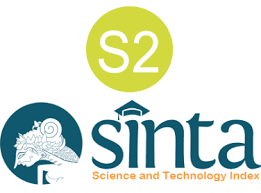Konektivitas ASEAN : Sebagai Sebuah Pergeseran Paradigma Dalam Proses Integrasi ASEAN
Abstract
Establishment of ASEAN in the period 1967 to 2010, ASEAN as a regional organization undergone many changes, both in terms of the dynamics of the issues faced up to the stage of organizational structure.
Globalization of trade liberalization resulting in movement of goods and services become limited. This encourages the re-realization of the ASEAN countries in order to restructure and integrate their economies in order to maintain their competitiveness, which in turn make ASEAN a more in-depth integration by establishing the ASEAN Economic Community (AEC) by 2015. Economic integration is expected to be used as a means to revitalize the economy of ASEAN.
With the implementation of economic integration, it is hoped will be a driver of growth is faster than all the countries in ASEAN. Therefore, the connectivity becomes very important for ASEAN countries as one of the conditions necessary for ASEAN integration process that evolved into the ASEAN Community, and also ensure the centrality of ASEAN as a regional architecture that evolves dynamically. Connectivity plan for the year 2015 according to the plan will involve the physical connectivity, institutional connectivity, and connectivity of the individual.
Full Text:
PDFReferences
Anderson, Kym. dan Richard Blackhurst, “Introduction and Summary” dalam Kym Anderson dan Richard Blackhurst, Regional Integration and The Global Trading System (Harvester Wheatsheaf, 1993).
Balassa, Bela.The Theory of Economic Integration (Homewood, Illinois: Richard D. Irwin Inc., 1961).
Bergsten, C. Fred.“Open Regionalism” Working Paper 97-3 (Washington D.C.: Institute for InternationalEconomics, 1997), online:
http://www.iie.com/publications/wp/wp.cfm?ResearchID=152.
Danyang, Qiu. “Zhongguo-dongmeng ziyu maoyiqu: zhongguo heping jueqi de diyuan jingjixue sikao” [“China-ASEAN FTA: On the Geo-Economics of China’s Peaceful Rise”], Dangdai yatai [Contemporary Asia-Pacific Studies], No. 1, January 2005.
Farrel, Marry.“The Global Politics of Regionalism: An Introduction”, dalam marry Farrel dan Bjorn Hettne (eds), Global Politics of Regionalism (London: Pluto Press, 2005).
GuWaosong,Prof. China's Peaceful Development and ASEAN-China Relations; dalam China’s Development and Prospect of ASEAN-China Relations, published by Vietnamese Academy of Social Sciences Centre for ASEAN and China Studies (CACS) Vietnam.
Hassan, Mohamed Jahwar. The Resurgence of China and India, major Power Rivalry and The Response of ASEAN, dalam Hadi Soesastro dan Clara Joewono (eds.), The Inklusif Regionalist, Centre For Strategic And International Studies, Jakarta, Indonesia, 2007.
Hew,Denis.Realizing The ASEAN Economic Community by 2015, dalam Hadi Soesastro dan Clara Joewono (eds), The Inclusive Regionalist, Centre For Strategic And International Studies (CSIS), Jakarta, Indonesia, 2007.
Hew, Denis.Toward an ASEAN Economic by 2015, dalam The ASEAN Community: Unblocking the Roadblocks, Institute of Southeast Asian Studies (ISEAS), Singapore, 2008.
Hew, D. & Das, S. B., ASEAN Economic Community and CLMV Countries. Workshop on Production Networks, Industrial Clustering’s and Industrialization Strategy in Less Developed Southeast Asia. Singapore: ISEAS, 2008.
Kangping, Wu. “Three major characteristics and challenges of the contemporary world economy”, Globe Times, April 2005, Beijing.
Lamberte, Mario B. “An Overview of Economic Cooperation and Integration in Asia” in Asian Development Bank, Asian Economic Cooperation and Integration: Progress, Prospects, and Challenges (Manila: Asian Development Bank, 2005).
Ludo, Chuvyers dan WisarnPupphavesa.From ASEAN to AFTA, CAS Discussion Paper No. 46, 1996.
Plummer, Michael G. “Creating an ASEAN Economic Community: Lesson from the EU and Reflections on the Roadmap” dalam Denis Hew,” Roadmap to an ASEAN Economic Community”.Institute of Southeast Asian Studies, Singapore.2005.
Soesastro, Hadi.Implementing the ASEAN Economic Community Blueprint, dalam The ASEAN Community: Unblocking the Roadblocks, Institute of Southeast Asian Studies (ISEAS), Singapore, 2008.
Yusuf, Edi. dalam seminar Komunitas Ekonomi Asean 2015 dan Implikasinya bagi Indonesia, Departemen Luar Negeri RI, di Universitas Indonesia, Jakarta, 12 Februari 2009.
Publikasi
ASEAN Declaration, Bangkok, 8 Agustus 1967.
ASEAN Document Series 1967-1985, ASEAN Secretariat, Jakarta, 1985.
ASEAN Secretariat, ASEAN Baseline Report: Measurements to Monitor Progress Towards The ASEAN Community, Jakarta: ASEAN Secretariat, 2005
Lihat Cetak Biru Komunitas ekonomi ASEAN, yang dikeluarkan Direktorat Jenderal Kerjasama ASEAN-DEPLU RI, 2009
Lihat framework Agreement on Enchanging economic Cooperation, Singapore, 1992
Master Plan on ASEAN Connectivity (MPAC), Association of Southeast Asian Nations, ASEAN 2011.
McKinsey &Company, ASEAN Competitiveness Study, McKinsey & Company, 2003.
The ASEAN Community; Unblocking the Roadblocks; ASEAN Study Centre report series, no. 1, Institute of Southeast Asean Studies Singapore, 2008.
Internet
WTO Secretariat, “Scope of RTAs”,
online:www.wto.org/english/tratop_e/region_e/scope_rta_e.htm>.
“Summary Report of the ARF ISG on Confidence Building Measures, Beijing, 6-8 March 1997,” www.aseansec.org/3605.htm.
The text of the Bali Concord II is available online at .
Refbacks
- There are currently no refbacks.










